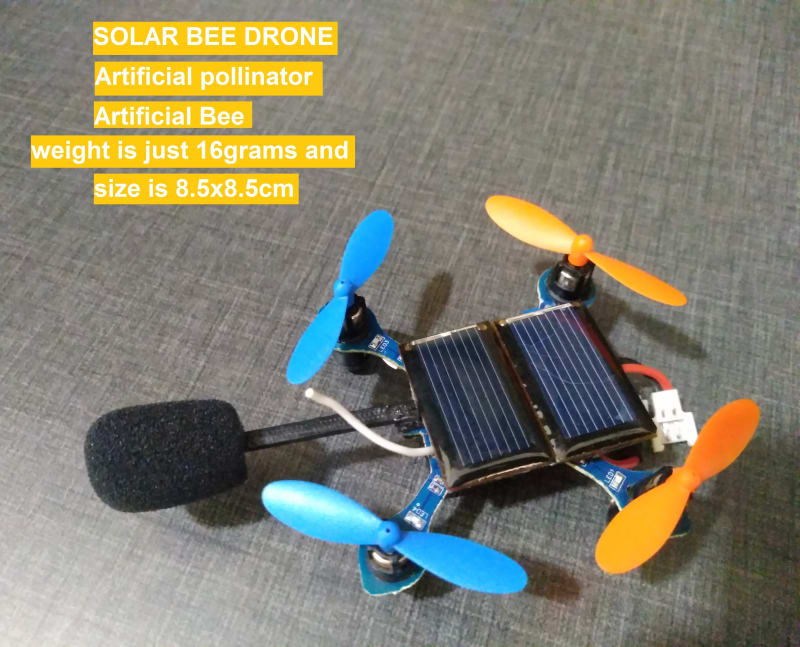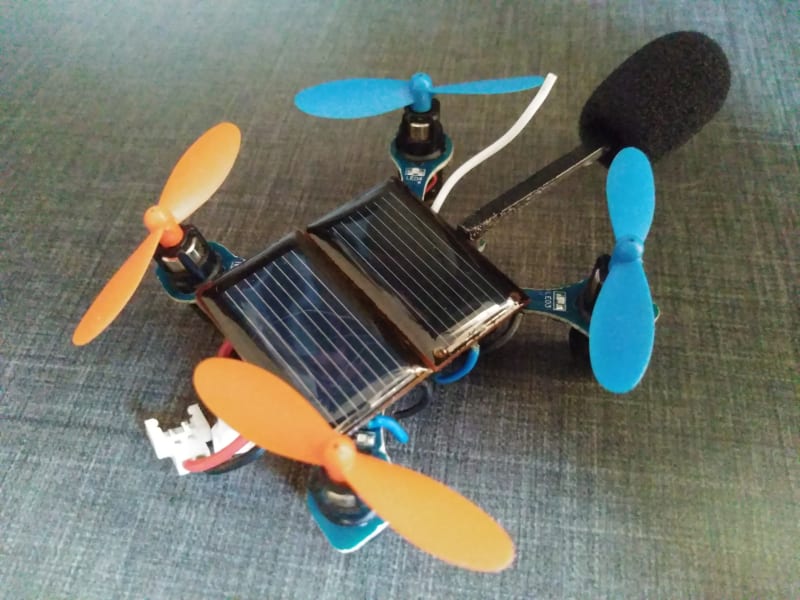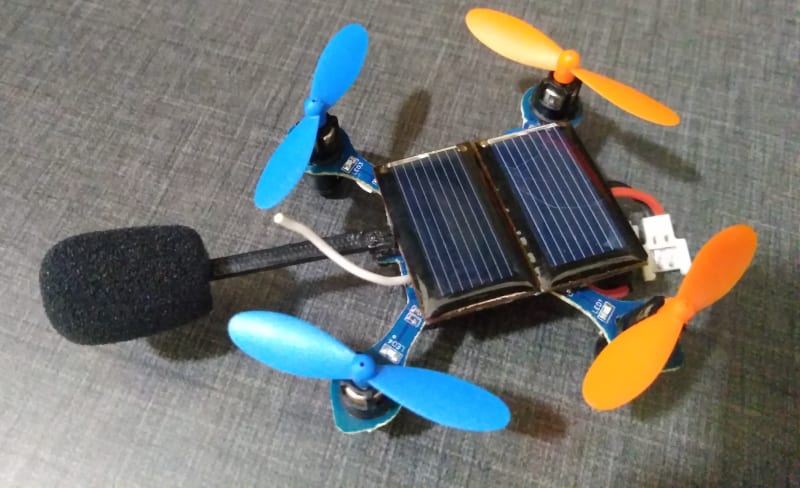Bees and other insect pollinators are under threat globally from multiple human pressures. If pollinators disappear completely from an ecosystem, their loss will affect structure of those ecosystems and the natural foods and fibres we use from the ecosystem. So, finding solutions to the problem of pollinator decline are imperative.
“If the bee disappeared off the surface of the globe, then man would have only four years of life left. No more bees, no more pollination, no more plants, no more animals, no more man.”
This is why the bee drone (artificial bee) story sounds like such a seductive idea. Imagine creating tiny drones with hairs on them that can be programmed to do a bee’s job? Wow! We are off the hook.
To create the bee drone (artificial pollinator, artificial bee) I have first designed a remote controlled nano drone. Its weight is just 16 grams and the size is 8.5x8.5cm. I attached sponge foam to its front side, to mimic the proboscis of a bee.
Finally, sponge foam, which is used to capture the pollen from flower when the drone touches the flower, and then delivers to another flower. Built-in tiny solar panels are converted sun light in to energy, then the battery will be recharged.
However, pollination was achieved an a large flower, and the drone was not autonomous. ”I believe that some from of artificial intelligence (AI), GPS would be very useful for the development of such automatic machines in future.”
Video
Like this entry?
-
About the Entrant
- Name:Eranna B
- Type of entry:individual
- Patent status:none








